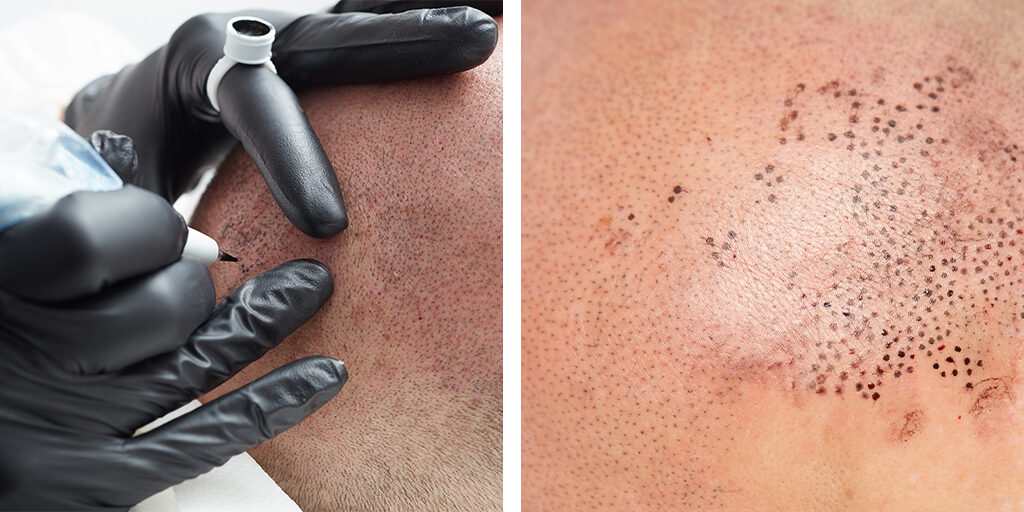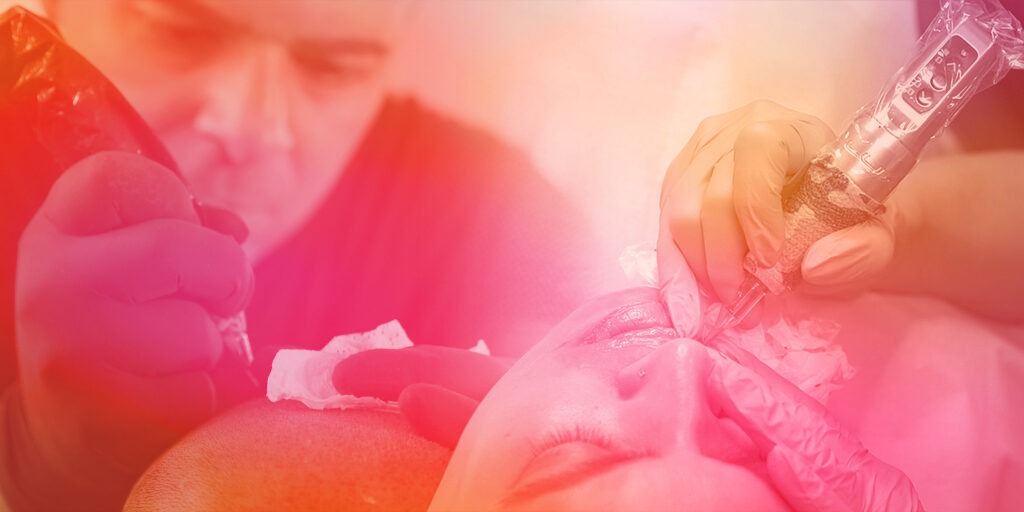Cosmetic vs Medical Tattooing
If you’re confused about some of the terminology around treatments, don’t worry, you are not the only one.
We’re here to clear up one majorly confusing element of PMU – which treatments are classed as medical, and which are cosmetic? And are there any crossovers between the two?
Read on to find out!
What’s the difference between medical and cosmetic tattooing?
Cosmetic tattooing can be defined as a microblading or micropigmentation treatment for purely aesthetic reasons. This might include eyelash enhancement, permanent eyeliner, brow treatments, lip blush and freckles, at least when they’re done on a client with no existing or medical issues. This type of treatment is for enhancing your clients’ appearance and features, rather than altering or fixing a specific problem.
Medical tattooing differs in its purpose, primarily being done to hide or improve the effects of medical treatments. Clients with scarring from surgery, burns, birthmarks, cleft palates, radiation treatment and skin grafts can benefit from scar camouflage treatments which aim to match the discoloured skin to the healthy skin around it. This can also be effective on clients with vitiligo, port wine stains or achromia.
Sometimes medical tattooing is about recreating a piece of anatomy that’s been lost – for example, recreating areolas and nipples in mastectomy patients, feminising areolas as part of gender confirmation surgery, and creating the impression of a belly button after a tummy tuck. There are even PMU artists offering toenail reconstructions using micropigmentation!
Medical tattooing often comes at the end of a long and difficult journey. For some it’s confirmation that their body is theirs to control again, for some it’s about looking “normal”, and for others it may just be a way to feel attractive.
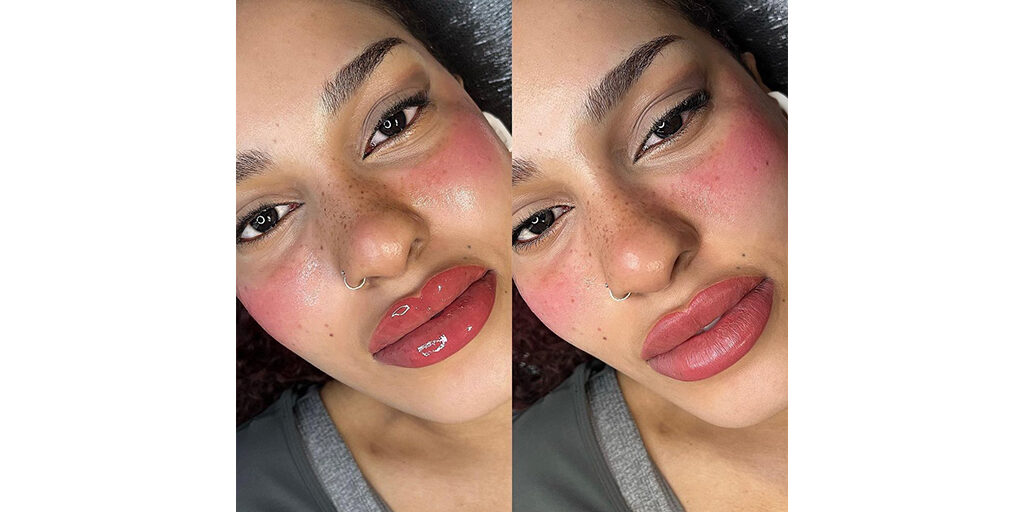
@summercrosbystudios/Instagram
Are there any medical reasons to get cosmetic tattooing?
Some ‘cosmetic’ tattoo treatments are especially beneficial for people who have suffered from medical problems.
Scalp micropigmentation is a popular treatment among sufferers of male and female pattern baldness, but is also effective treatment for those who have lost hair through chemotherapy or trichotillomania. It’s also useful for alopecia sufferers, who may want their brows and lashes enhanced to frame their face.
Lip blush can also be used to hide the effects of cleft lip restoration, whether done alongside scar camouflage or on its own to create symmetry. Individuals with naturally uneven, asymmetrical lips can also benefit hugely from a lip blush treatment.
Additionally, cosmetic tattooing can be a useful tool for clients with conditions such as Parkinson’s, arthritis, and multiple sclerosis, as they may no longer have steady enough hands to apply makeup themselves. Visual impairments can also make applying makeup difficult, as well as having allergies to common cosmetics.
Treatments such as lip blush and brow transformations are usually used for cosmetic purposes, but they can be used for medical purposes as well. Both cosmetic and medical tattooing can have a huge effect on the client, boosting their confidence and helping them to feel good about themselves – neither is more important, or more valid, than the other.
Why would someone get a medical tattoo?
Every client will have their own reason for getting a medical tattoo.
The benefits can be visual, physical, and most likely psychological. Treatment can represent a reclaiming of the body, or merely disguise the effects of an uncomfortable condition or something that they feel self-conscious about.
It’s hard to underestimate the effect that this kind of treatment can have on patients. Someone who’s had a mastectomy which resulted in the loss of their nipple might feel incomplete until one is tattooed on – as the tattoo is the final step following a reconstruction. Once the treatment is done, they can go back to their lives before the hell of cancer and chemotherapy, and regain their confidence and self-esteem.
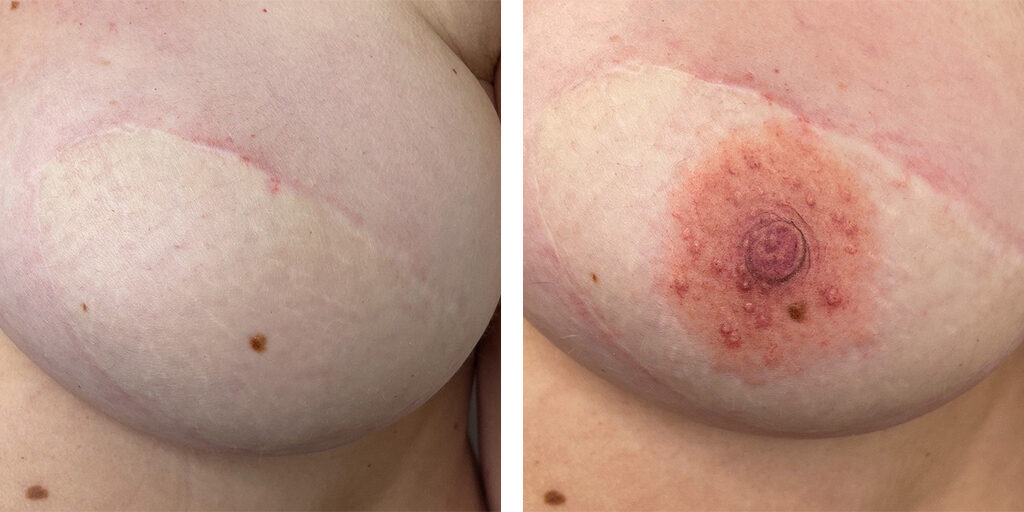
What kind of pigments are used for medical and cosmetic tattooing?
Medical and cosmetic tattoos use the same kinds of pigment, which are medical grade and suitable for all delicate areas of the face. The pigments used in PMU have been created specifically for the face and contain smaller particles than traditional tattoo inks. We have a whole blogpost on the difference between PMU pigment and tattoo ink which you can read here.
Due to a combination of these factors and the cellular structure of the skin that PMU primarily works on, the pigments will usually fade over time, although won’t disappear completely.
The only exceptions to this are in areola tattooing, which is sometimes performed with traditional tattoo machines and inks, as some artists prefer the results to be bold and long-lasting. This may also be due to the skin of the body having a different cellular structure to the face – making it better suited to traditional tattoo inks than PMU pigments. Different PMU artists will have different ways of working however, so clients should always check the details of the treatment and how frequently they will need future sessions.
The pigments used may also vary in tone – PMU pigments are typically used in medical tattoo treatments such as lip brush, brows or lash enhancements, while skin-toned pigments are more commonly use for scar camouflage treatments. Colour correctors and modifiers may also be used in both types of treatment.
Can medical tattoos be changed or undone?
Much like cosmetic tattooing, the pigments implanted into your client’s skin will never entirely leave. However they will fade, firstly during the healing process, then gradually over time until they may not be noticeable any more.
Camouflaged scars are the least likely to reappear, as well as areolas being long-lasting if done in a traditional tattoo method. For some breast cancer survivors this is a huge advantage, as going back to repeat the process can be emotionally challenging for people trying to move on with their lives after debilitating illness.
Most treatments will need a top up every few years, depending on the area and how the pigment fades, to maintain the results. Your client should be aware before undergoing treatment that they’ll need to have ongoing treatments, when they will be done, and how much they’ll cost. Of course, longevity of results comes down to multiple factors including individual skin type but following pre and post care advice regarding caffeine, alcohol and UV protection will all help to promote longer-lasting results.
If a client isn’t happy with their results they can opt for tattoo removal, or salt-saline removal if they’re fast enough. If caught within a few days of microblading, salt-saline removal can be very effective at removing pigment, allowing for the treatment to be redone. If the treatment is older and faded, a cover-up may be possible, but artists do need to assess this on a case by case basis.
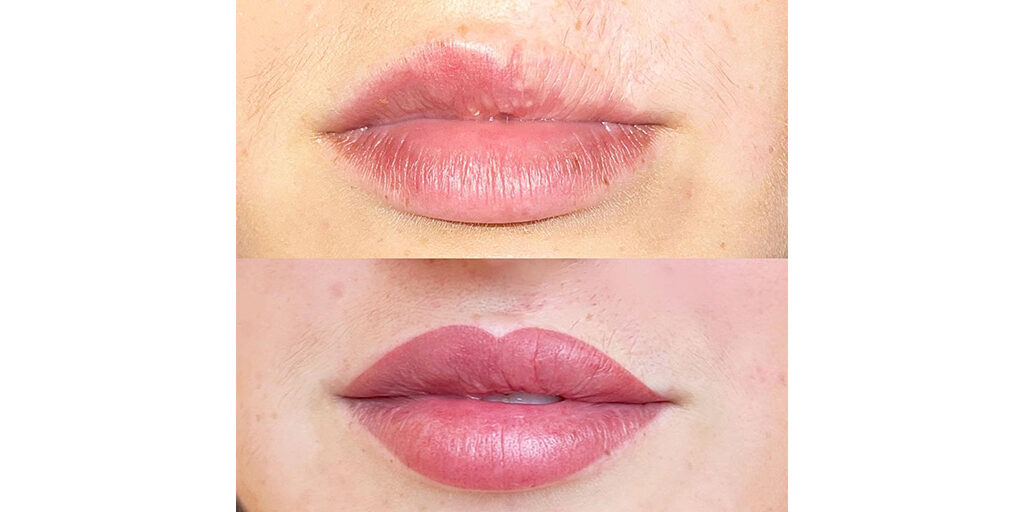
Are there any people on whom medical tattoo treatments can’t be done?
Suitability for medical tattooing is a highly personal thing that only a qualified PMU specialist can assess. However, there are a few conditions that prohibit treatments, or make them less effective.
Scar camouflage doesn’t work well on very dark scarring and can’t be done on active keloids or on keloid scarring that’s been treated with steroids. Any individuals who experience keloids will need to make their artist aware before booking a cosmetic or medical PMU treatment, as they may not be suitable for the procedure.
Breast reconstruction after a mastectomy should be fully healed before areolas and nipples can be added. Scars and skin grafts need to be fully healed and all laser treatments finished, and vitiligo needs to have been static for seven years, or the treatment might trigger a reaction. Clients undergoing chemotherapy or radiotherapy will also need to speak to their consultant or doctor before considering any medical tattoo treatments, as this is something the PMU artist isn’t qualified to advise.
What aftercare is needed?
You should always follow the same strict instructions for clients who have received any form of cosmetic or medical tattoo treatment. If you’re in need of a recap, we’ve got a blog with everything you need to know!
Both medical and cosmetic tattooing can provide major benefits for your client, helping them to feel more at home in their body, and may even involve the same treatment. Most micropigmentation treatments can fall into the cosmetic or medical tattoo category, depending on the client and their personal reasons for getting the treatment.
The major difference after all is simply the purpose of the treatment!
